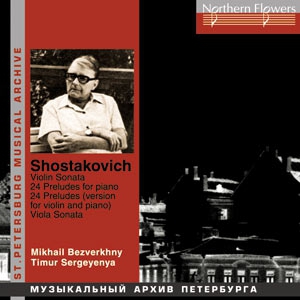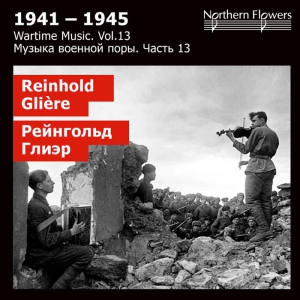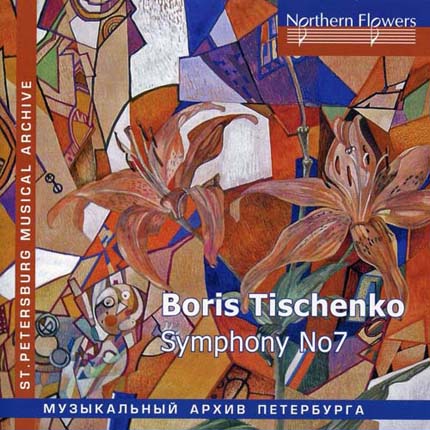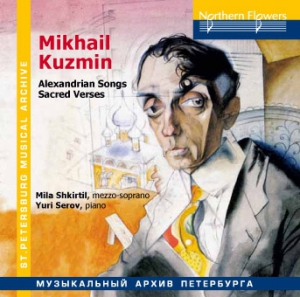Description
Dmitry Dmitrievich Shostakovich (1906 – 1975)
Violin Sonata,
24 Preludes for piano,
24 Preludes (version for violin and piano),
Viola Sonata
Mikhail Bezverkhny, violin & viola
Timur Sergeyenya, piano
|
|
|||||||||||||||||||||||||||||||||||||||||||||||||||||||||||||||||||||||||||||||||||||||||||||||||||||||||||||||||||||||||||||||||||||||||||||||||||||||||||||||||||||||||||||||||||||||||||||||||
|
“In honour of the 60th anniversary of David Fedorovich Oistrakh”s;, reads the friendly dedication made by Dmitry Shostakovich to the Sonata for Violin and Piano. The background of this masterpiece, this acme in the composer’s chamber works (moreover, in the 20th century’s music on the whole) was later commented by the great violinist in his memoirs as follows: “Dmitry Dmitriyevich got an idea to give me a birthday present, that is, to write for me a new Second concerto, completing it right by my 60th anniversary. But he miscalculated the finishing date by one year. The Concerto was ready by my 59th anniversary. It seems Dmitry Dmitriyevich believed that the error had to be corrected. That was how the sonata for violin and piano appeared… I could not expect that, although I had been dreaming for years of a violin sonata written for me by Shostakovich“.
The piece was completed in the autumn of 1968. The composer was already seriously ill by the time. Despite the world–wide recognition, renown, and unrestricted possibilities for performance of new works, the variety of images created by Shostakovich in his last period of life is surprisingly sad. Elements of perception of the tragic in the human existence are matched in his compositions with serene melancholy, sometimes with light irony. The active spirit is minimized, pondering and insight becoming the main points. And it was chamber music, as the will and confession of the great composer, became his key genre of composition in his last years.
The Sonata is a cycle not quite usual in its structure. Its beginning and end, that are calm and restrained, frame a rapid and vigorous Allegretto. The First Movement begins in a theme passing through all the twelve tones of the scale, an open reminder of Arnold Schoenberg’s dodecaphonic system which had been in existence for several decades by that time. A soft, unhurried Andante leaves an impression of some omitted utterance. Mysterious sounds are transformed in the reprise into nearly mystic ones, anticipating and preparing the main act. The appearance of a dance-like second theme just emphasises the brittle and illusory nature of the core material. The Second Movement is a non-stop motion, a ‘devilish’ scherzo toccata so typical for Shostakovich music. The drive of rhythm and energy, the harsh and coarse themes, it all seems to be taken from a previous active and filled life. Rushing rapidly in, the music suddenly stops; the opening fanfares lead to the variations of the Finale. Proceeding through a chain of reincarnations of every kind, exposing the main theme from every side, the development reaches its apex, the dramatic climax of the entire sonata: after the virtuoso cadences of the piano and violin, the master tune of the variations comes back again, but this time powerfully driven. In a moment, the form of the entire composition becomes clear, as if lit with a bright flash. The climax leading of the main theme crowns the grand edifice like the dome of a magnificent cathedral. On the last pages, in the coda, the mysterious episodes from the first movement come back, leaving the impression that the great master could say more but never did…
24 Preludes for Piano were written by the composer in the years 1932 and 1933, – as he himself used to put it, “in a train” between Leningrad and Moscow. Shostakovich had just finished his opera Lady Macbeth, and frequently had to visit the capital for business related to its production. Addressing miniature pieces after the monumental and tragic opera might seem somewhat unexpected – at the first glance. In any case, the string of preludes, emotionally, differs from the severe atmosphere of Lady Macbeth so greatly that it is hard to believe that these two opuses are so close to each other in time, and even that they belong to the same author at all. Irony, humour, satire — and limitless emotion and tenderness. These are the two main poles around which these marvellous miniatures are built. A generous gift of melody, and brilliant use of the instrument’s capabilities by the young composer, remind of the best achievements of the Russian school of pianism.
Nineteen of the twenty-four preludes were transcribed for violin and piano by Dmitry Tsyganov, an outstanding violinist, a friend of Shostakovich, and his partner in ensembles. These arrangements, which carefully retain the instructions by the author, be it on the texture and tone, or even minor remarks on dynamics and articulation, soon became a popular and integral element of the Soviet violin repertoire, successfully rivalling the original piano version.
The Sonata for Viola and Piano happened to become the last composition of Dmitry Shostakovich. In the spring of 1975 the Leningrad Philharmonic asked the composer to recommend a few pieces for his personal one-author concert, which by tradition was to open the concert season. Shostakovich selected three instrumental sonatas, i.e. the Cello, the Violin, and finally the Viola Sonata, which he set out to compose in May of that year, in the composers’ resort in Repino near Leningrad.
The composer was fatally ill, his health declining with every day. He had become completely unable to write: his right hand did not respond, and work was interrupted by asthmatic fits. It was only a colossal effort of will that enabled Shostakovich to complete the work, and moreover, to put his last and probably innermost thoughts in the Viola Sonata.
Just as the autobiographic Eighth Quartet, the Sonata contains many citations from his own opuses: Execution of Stepan Razin, The Gamblers, and Suite for Two Pianos (the composer’s very early piece written in the days of his youth). However, the most important citation, and the easiest to recognize, is the theme of the Finale echoing the famous Adagio from Beethoven’s Moonlight Sonata.
The Sonata has three movements. The first one, Moderato, is laden with a dramatic conflict bringing about harsh contrasts; two equal partners, the viola and the piano, go through an ‘argument’ only to arrive at an agreement and to end in supporting each other. The second movement (Allegretto) exposes music to an invasion of some remote memories, some reverberations of previous life poetically transfigured by the composer. In the final movement (Adagio), a crystal clear tune flows freely and serenely, as if narrating a story of tremulous, never-dying Beauty. Mysterious and strained silence reigns, allowing both for final clarification and parting.
The premiere of the opus was played in Leningrad on October 1, 1975, when its author had already passed away.
|
|
Violinist Mikhail Bezverkhny was born in Leningrad in 1947. He finished the Special School of Music of Leningrad Conservatory (class of Yakov Ryabinkov). In 1965–70 he studied at Moscow Conservatory with Prof. Yuri Yankelevich, an outstanding violin teacher of the 20th century. He is a prize-winner of six international competitions, such as the Weniawski, Montreal, and Queen Elizabeth, as soloist and as a member of the Moscow Trio. He has toured in dozens of countries of Europe, Asia, and America, and has recorded over 40 LPs and CDs. He has been living and working in Belgium since 1990. Mr. Bezverkhny is a professor of Ghent Conservatory. He is also known as viola player, composer, and cinema actor.
Mikhail Bezverkhny is a well-known interpreter of works of Dmitry Shostakovich. When still a student, in 1967, he contributed to the premiere of Shostakovich’s vocal cycle to words by Alexander Blok together with singer Margarita Miroshnikova and cellist Natalia Gutman. It was then that he met the composer, in whose Moscow home this composition was rehearsed. Later, Bezverkhny was an initiator of readdressing long-forgotten arrangements by Shostakovich of popular melodies by 19th-century classics. He has performed these arrangements in Leningrad, Moscow, and Kiev with pianist and musicologist Sophia Khentova, singer Larissa Shevchenko, and other musicians. From 1993 till 1999, Bezverkhny was a member of the Shostakovich Trio, where the core of the repertoire were works of the great composer. The recital playbill of the musician features all the violin compositions of Shostakovich.
|
Timur Sergeyenya was born in Minsk in 1969. He graduated from the State Conservatory of Belorussia, where he studied with Prof. Irina Tsvetayeva and Prof. Valery Shatsky, and was on probation with Naum Shtarkman, professor of Moscow Conservatory. In 1996-99 he was Assistant Professor at the Conservatory of Belorussia. He has published several research articles on psychophysical training of a musician for concretizing, which were related to his long-time devotion to Oriental combat arts. He has been living in Germany since 1999. Mr. Sergeyenya has performed with piano recitals in countries of Western and Eastern Europe and America (over 1,500 concerts in 25 years of performing). He continuously plays in ensembles, and in particular with Mikhail Bezverkhny since 1999, first in the Shostakovich Trio, and afterwards in a duo. Since 2001 he has been producer of the annual festival of music in Uerdingen, Germany.
The repertoire of Timur Sergeyenya comprises all the piano opuses of Shostakovich.
|
|





